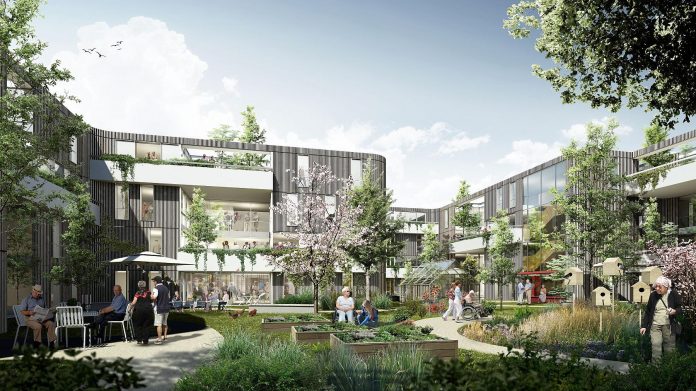In this guest post, Jo Caughtry introduces the benefits of biophilic design, citing evidence of improved workforce retention and enhanced mood and cognitive function. With a background in nursing and health management, Ms Caughtry, as the Creative Director of Sea of Ideas Design, is a leader in delivering holistic benefits through biophilic design in an aged care setting. She will also be speaking at the inaugural Future of Ageing conference in Sydney on August 29.
In the serene embrace of nature lies an age-old secret to rejuvenation and well-being. Yet, amidst the concrete walls and fluorescent lights of residential aged care facilities, this vital connection often remains severed. However, a ground-breaking approach is on the horizon—one that intertwines the healing power of nature with the very fabric of these spaces.
Enter biophilic design, an innovative concept that holds the promise of transforming aged care environments into vibrant sanctuaries of vitality and tranquillity.
At its essence, biophilic design seeks to bridge the gap between indoor spaces and the natural world, incorporating elements such as natural light, vegetation, and flowing water into architectural and interior design.
In the context of residential aged care facilities, where residents spend most of their time indoors, embracing these principles can have profound implications for their well-being.

One of the most notable benefits of biophilic design is its potential to enhance the physical environment. Natural light, for instance, illuminates spaces and regulates circadian rhythms, promoting better sleep patterns and overall health.
By strategically positioning windows and skylights, designers can optimise daylight exposure, reducing the reliance on artificial lighting and creating a more harmonious living environment.
Moreover, the integration of vegetation and greenery serves as a visual and sensory feast, fostering a sense of connection with the outdoors. Indoor gardens, living walls, and potted plants purify the air and evoke feelings of serenity and vitality.
For residents who may be unable to venture outside, these green havens provide a tangible link to the natural world, offering solace and comfort in times of solitude.

Yet, the power of biophilic design extends beyond the physical realm, permeating into the emotional and psychological well-being of residents and staff alike. Studies have shown that exposure to nature, even in simulated forms, can reduce stress, anxiety, and depression while enhancing cognitive function and mood.
In an environment where feelings of isolation and loneliness may prevail, the presence of natural elements serves as a source of solace and companionship, nurturing a sense of belonging and connection.
Furthermore, the incorporation of biophilic design principles can foster a culture of care and compassion among staff members. By creating spaces that prioritise the well-being of both residents and caregivers, facilities cultivate a supportive and nurturing work environment, ultimately enhancing job satisfaction and retention rates.
When caregivers feel valued and supported, they are better equipped to provide high-quality care, fostering stronger bonds with residents, and promoting overall morale within the facility.
However, the journey towards embracing biophilic design in residential aged care facilities is not without its challenges. From budget constraints to logistical hurdles, implementing such principles requires a concerted effort from all stakeholders. Yet, the investment is not merely financial; it is an investment in the health, happiness, and dignity of those who call these facilities home.
The integration of biophilic design principles represents a paradigm shift in the way we perceive and approach residential aged care. By reconnecting residents with the natural world, we have the opportunity to transform sterile environments into vibrant sanctuaries of life and vitality. As we turn over a new leaf in aged care facilities, let us not only embrace the healing power of nature but also reaffirm our commitment to the well-being and dignity of every individual in our care.










